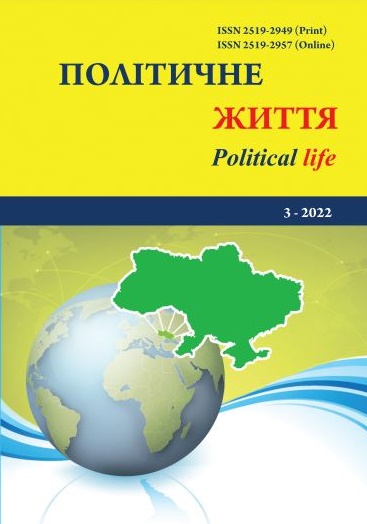Apriority of time and space perception as a split of reality
DOI:
https://doi.org/10.31558/2519-2949.2022.3.10Keywords:
apriority; visual communication; heterotopia; image; symbol; topos and chronos; photographic media textAbstract
While studying the mechanisms of information perception and relying on a priori theory by Kant, questions related to visual communication are raised. If the subject, according to I. Kant, possesses a priori contemplation due to which he percepts time and space, then how he uses this mechanism during visual communication? When a transcendental subject uses the synthesis of judgments in visual texts, which is the experience of perception of the real world time and space, whether the opposite effect is possible? How the experience of perception of time and space in the real world influences the approximate practice of the subject’s behavior in the virtual world? These questions allowed us to hypothesize the loss of boundaries between the real and the virtual dimensions on the example of the visual text’s study.
In this study, we focused on the first stage of apriority – contemplation. The phenomena of space and time, represented through certain variables in the visual text, have become the main research objects. In the first phase of the study, we analyze these variables based on the concept of image analysis by G. Kress and T. van Leeuwen. In the second phase, we turn to M. Foucault’s theory of heterotopia to define how badly the subject loses the boundary between the real and the virtual. Thus, among the methodological foundations of the study, we applied the theory of a priori by I. Kant, the heterotopia theory of M. Foucault, as well as the analysis of images by G. Kress and T. van Leeuwen.
When a subject finds himself between two realities, it is difficult to prove where objectivity and where subjectivity is, because the act of seeing is predictable. Apriority of contemplation used in the perception of objects in different spaces gives impressions and emotions. And it splits the subject even more, as the demarcation line between virtual and real spaces is lost. The predicted mechanical procedure of reading visual texts can be not only a technique to influence the behavior, but indicate the personal loss of the subject, which has already violated the boundaries between virtual and real worlds.
References
Berger A. (2005), Seeing is Believing: An Introduction to Visual Communication. McGraw-Hill Education / Asia.
Eco, U. (1998), Otsutstvuyushchaya struktura. Vvedenie v semiologiyu [Missing Structure. Introduction to Semiology]. Petropolis [in Russian].
Foucault M. (2006), Drugie prostranstva. Utopii i geterotopii [Of Other Spaces: Utopias and Heterotopias]. Praxis [in Russian].
Hall S. (1997), The work of representation." Representation: Cultural representations and signifying practices, 2, 13-74.
Kress G., Leeuwen T. (2006), Reading images : the grammar of visual design. Psychology Press.
Lorenz C.(2020), Kantian doctrine a priori in the light of modern biology y. [online]. [2020-03-21]. Available at: .
Maffesoli M. (2020), The Man of Postmodernity (translation of the article included in the collection “L’Homme postmoderne”,Paris, Bourin éditeur, 2012). [online]. [2020-03-16]. Available at: .
Maffesoli M. (2016), Each has his own tribes: from the contract to the pact (translation from French by Maria the Prophet). Mediator. Mass media, society and culture. M .: R. valent.
Habermas J. (2007), Teoriya kommunikativnogo dejstviya (fragmenty). [Theory of communicative action (fragments). Voprosy socialnoj teorii. [Questions of social theory]. № 1. 229 – 245. [in Russian].
Plato. (2006), Sochineniya v chetyreh tomah. [Collected Works in 4 vols. Tom 3. Chast 1]. Izdatelstvo Olega Abyshko [in Russian].
Pollock G. (1995), Beholding Art History: Vision, Place and Power, in Melville, S. and Readings, B., eds. Vision and Textuality. Basingstoke: MacMillan.
Sztompka, P. (2015). Vizualnaya sociologiya. Fotografiya kak metod issledovaniya. [Visual sociology. Photography as a research method]. Litres [in Russian].
Wölfflin H. (2018), Osnovnye ponyatiya istorii iskusstv. [Principles of art history]. Litres [in Russian].

